Fantasy sports have transformed the way fans engage with their favorite games, turning passive spectators into active participants. At its core, fantasy sports allow users to assemble virtual teams made up of real-life athletes. These teams then compete against others based on the statistical performance of the athletes in actual games. What began as a niche hobby among sports enthusiasts has evolved into a multi-billion-dollar global industry, captivating millions across various sports, from cricket and football to basketball and esports.
The appeal of fantasy sports lies in its perfect blend of strategy, competition, and knowledge. Players must analyze real-world data, monitor injuries, assess form, and make smart lineup decisions to succeed. It’s not just about luck—skill, research, and timing often separate the winners from the rest. With the rise of daily fantasy sports (DFS) and intuitive mobile apps, the barrier to entry is lower than ever, making the format more accessible and engaging.
For fantasy sports enthusiasts, it’s more than a game—it’s a way to deeply connect with the sports they love, test their analytical thinking, and enjoy a sense of ownership and competition. This guide will explore everything there is to know about fantasy sports, from their origins to how they work, popular fantasy leagues, and advanced strategies.

Evolution and History of Fantasy Sports
The concept of fantasy sports has evolved from humble, paper-based beginnings into a billion-dollar global industry. The roots of fantasy sports can be traced back to the early 1960s, but the phenomenon began gaining structured form in the 1980s with the advent of Rotisserie Baseball. Devised by journalist Daniel Okrent and his friends at New York’s La Rotisserie Francaise restaurant, this game involved participants “drafting” real-life Major League Baseball players to form imaginary teams. The performance of each team was tracked using real-world player statistics, often calculated manually from newspaper box scores.
As the format gained traction, Rotisserie leagues began appearing across the U.S., primarily among baseball enthusiasts. This era also saw the emergence of fantasy football and fantasy basketball in informal circles. However, fantasy sports were still largely considered a niche pastime due to the manual effort involved in tracking and scoring.
The 1990s
The real revolution began in the 1990s with the widespread adoption of the Internet. Websites like Yahoo Fantasy Sports and ESPN Fantasy allowed users to manage teams, draft players, and view real-time scores without manual calculations. The user experience became more streamlined, attracting millions of casual sports fans. By the early 2000s, fantasy sports had become a mainstream hobby in North America, particularly driven by the NFL’s immense popularity. Fantasy football became the most played fantasy sport in the United States, followed by baseball, basketball, and hockey.
The 2000s to the Present
A new wave of innovation hit the fantasy sports industry in the late 2000s with the emergence of Daily Fantasy Sports (DFS). Unlike traditional season-long formats, DFS contests allowed users to draft new teams daily or weekly and win real money based on short-term performance. Companies like DraftKings and FanDuel capitalized on this model, turning fantasy sports into a fast-paced, high-stakes ecosystem. By offering immediate gratification and cash prizes, DFS attracted a broader demographic, including those more inclined toward real-money wagering.
Globally, fantasy sports began to take off in markets like India, where betting platforms localized the model to cater to the massive cricket-following population. Dream11, founded in 2008, became a game-changer during the Indian Premier League (IPL) seasons, bringing fantasy sports to millions of mobile-first users. Its success catalyzed the rise of multiple fantasy platforms across Asia and led to widespread adoption of fantasy cricket, football (soccer), and kabaddi.
Over the decades, fantasy sports have grown from a casual fan engagement tool into a serious industry powered by data analytics, real-time sports integration, mobile accessibility, and legal regulation. Today, fantasy sports are not just games; they are a fusion of entertainment, strategy, and community, changing how fans consume and interact with their favorite sports.
Types of Fantasy Sports
Fantasy sports have evolved significantly over the years, resulting in a wide variety of game formats that cater to different player preferences, strategies, and time commitments. From season-long leagues that demand consistent engagement to quick-fire daily contests that offer instant gratification, each type brings its own flavor and appeal. Understanding these formats is essential for choosing the one that best suits your style and availability.
Season-Long Leagues
Season-long fantasy sports are the traditional format that most long-time fans associate with the genre. Participants draft their teams before the season begins—typically using a snake or auction draft—and manage them over the entire course of the real-life sports season. Managers set lineups weekly or daily, make trades, and pick up players via waivers or free agency.
This format rewards consistency, long-term strategy, and deep knowledge of the sport. It often includes head-to-head matchups, rotisserie scoring (cumulative stats), or points-based systems. Season-long formats are especially popular in fantasy football, baseball, and basketball.
Pros:
- Deeply immersive and strategic
- Promotes long-term engagement
- Builds community through leagues and rivalries
Cons:
- Time-consuming
- Requires commitment across the whole season
Daily Fantasy Sports (DFS)
Daily Fantasy Sports (DFS) exploded in popularity over the past decade thanks to platforms like DraftKings, FanDuel, and Dream11. Unlike season-long leagues, DFS allows users to draft a new team every day or gameweek and compete in contests that last just one matchday or event.
Scoring is typically points-based, and contests can be head-to-head, multi-entry tournaments, or double-ups (where the top 50% of participants win). DFS emphasizes short-term performance analysis and is favored by players who enjoy quick results and frequent gameplay.
Pros:
- Fast-paced, with daily or weekly outcomes
- Low commitment; no long-term management required
- Great for trying out different strategies
Cons:
- High variance; can be harder for beginners
- Fewer connections with drafted players
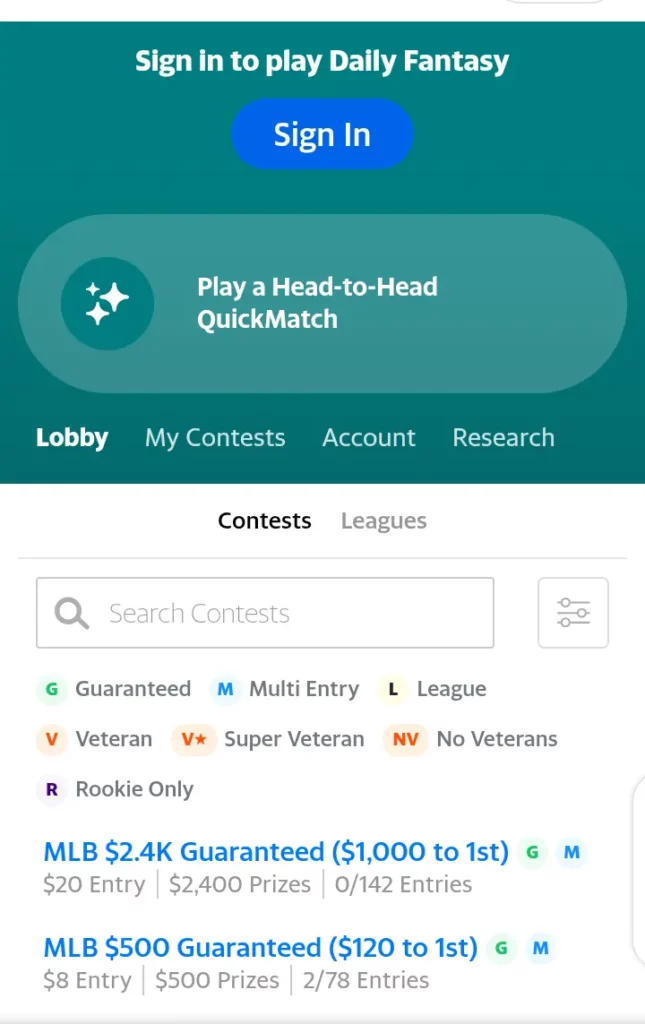
Weekly Fantasy Sports
Weekly fantasy leagues blend the traditional depth of season-long formats with the convenience of short-term gameplay. Players draft a team for a single week and compete based on that week’s results. Some platforms auto-reset the league weekly, allowing fresh starts and new participants at any point during the season.
This format is particularly popular in fantasy football and cricket, where fixtures are naturally segmented by week.
Pros:
- Balanced between long-term and daily formats
- Allows for consistent resets and recovery from bad weeks
- Ideal for casual and semi-serious players
Cons:
- Less immersive than season-long formats
- Strategy limited to short-term planning
Draft-Only & Best Ball Leagues
Draft-Only or Best Ball leagues involve only one draft at the beginning of the season, with no in-season roster management. The platform automatically sets the optimal lineup each week based on players’ real-life performances. The format is purely strategic at the drafting stage and eliminates ongoing management.
Best Ball is ideal for players who enjoy the drafting process but lack time for weekly updates.
Pros:
- No maintenance after drafting
- Appeals to draft enthusiasts
- Reduces decision fatigue
Cons:
- No chance to adjust for injuries or slumps
- Less interactive and competitive during the season
Dynasty & Keeper Leagues
Dynasty and Keeper leagues offer a long-term, franchise-style approach to fantasy sports. In Keeper leagues, managers retain a set number of players from the previous season. In Dynasty leagues, the entire roster is carried over year-to-year, mirroring real-life team building.
These formats appeal to serious players who want to build and manage a fantasy team across multiple seasons, focusing on youth, trades, and future planning.
Pros:
- Deep immersion and realism
- Emphasis on scouting and long-term planning
- Strong league camaraderie
Cons:
- High complexity
- Harder for new players to join existing leagues
Prediction & Pick’em Games
These are simplified fantasy formats where players predict outcomes such as match winners, top scorers, or key events rather than managing a full roster. Often used in fantasy cricket and football apps, pick’em games are fast and easy to play, ideal for beginners or casual fans.
Pros:
- Quick and easy to understand
- Great for casual engagement
- Lower risk and learning curve
Cons:
- Less depth and strategy
- Limited long-term involvement
Overall, the diversity in fantasy sports formats ensures that there’s something for everyone, from stat-obsessed veterans to casual sports fans. Choosing the right type depends on how much time you can commit, how much control you want, and how deeply you wish to immerse yourself in the game.
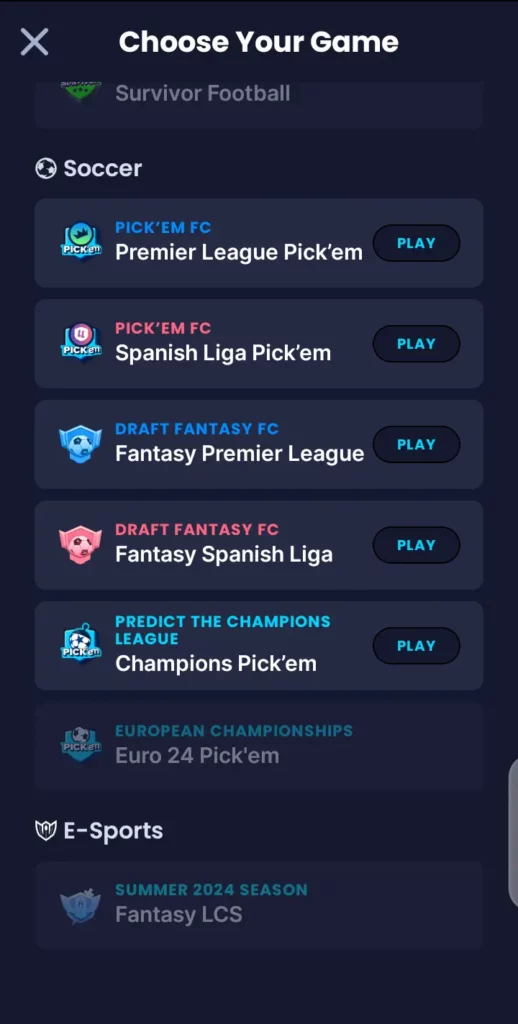
Most Popular Fantasy Sports Leagues by Sport
Fantasy sports have flourished by building communities around major sports leagues, allowing fans to become virtual team managers and deeply engage with their favorite games. While fantasy football remains the most popular globally, other sports like cricket, basketball, and baseball also command massive followings depending on regional preferences and league calendars. Below is a comprehensive look at the most widely played fantasy sports leagues by sport.
Fantasy Football (NFL & Global Soccer)
Fantasy football is arguably the origin of modern fantasy sports mania. In the United States, NFL Fantasy Football reigns supreme, with tens of millions of players participating each year. Popular platforms like ESPN, Yahoo, DraftKings, and FanDuel offer both season-long and daily fantasy football formats. Scoring is typically based on offensive yardage, touchdowns, and defensive stats.
Globally, fantasy soccer is massive, especially in Europe, South America, and parts of Asia. The English Premier League’s official Fantasy Premier League (FPL) is played by over 11 million managers worldwide. Additionally, UEFA Champions League and World Cup fantasy leagues gain popularity during major tournaments. Soccer fantasy focuses on goals, assists, clean sheets, and minutes played, offering a more fluid scoring dynamic.

Fantasy Cricket
Fantasy cricket is the undisputed king in countries like India, Pakistan, and Bangladesh. This is often reflected in massive viewership and heavy betting action on renowned bookmakers like Parimatch. Similarly, platforms such as Dream11, My11 Circle, and MPL have transformed cricket engagement by allowing fans to build lineups based on real-life players from domestic and international matches. The Indian Premier League (IPL), with its high-octane format, is the most played fantasy cricket league.
Players score points for runs, wickets, catches, strike rates, and economy rates. Fantasy cricket is unique because it caters to multiple formats — T20, ODI, and Test matches — with scoring systems tailored to each. The introduction of daily and even intra-match fantasy contests (like “second innings” games) adds layers of engagement.
Fantasy Basketball (NBA)
Fantasy basketball is popular in North America, China, and the Philippines, largely driven by the global reach of the NBA. It attracts millions of players who enjoy the sport’s fast pace and stat-heavy nature. Fantasy NBA games often use categories like points, rebounds, assists, steals, and blocks for scoring.
Platforms like Yahoo, ESPN, and Sleeper offer standard and custom league options, while DraftKings and FanDuel dominate in DFS formats. Since basketball games occur more frequently than football or cricket, managing fantasy basketball requires daily lineup changes and more consistent engagement.

Fantasy Baseball (MLB)
The roots of fantasy sports lie in fantasy baseball, which began with rotisserie leagues in the early 1980s. It remains immensely popular in the United States, particularly among stats-focused fans. MLB’s long season (162 games) provides a treasure trove of data for fantasy players to analyze.
Scoring involves hits, home runs, RBIs, stolen bases, and pitching metrics like ERA and WHIP. Due to its time commitment and deep statistical strategy, fantasy baseball is often seen as more niche, appealing to seasoned players.
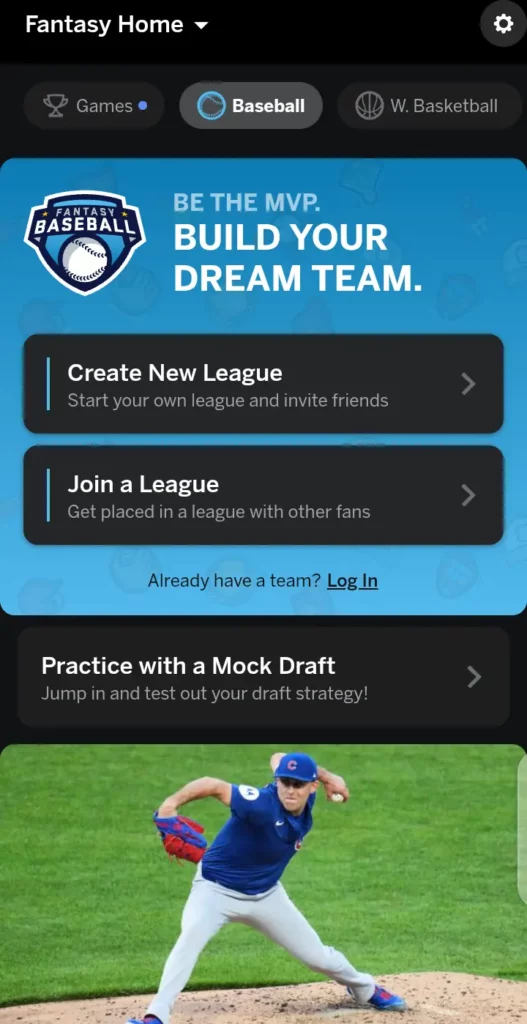
Fantasy Hockey (NHL)
Fantasy hockey may not match the popularity of football or cricket, but it commands a loyal fan base, particularly in Canada, the northern United States, and Scandinavia. The NHL is the primary league for fantasy hockey, with scoring systems that reward goals, assists, power-play points, saves, and shutouts.
Though its user base is smaller, fantasy hockey has grown through platforms like ESPN, Yahoo, and Fantrax, where player stats are updated live during matches.
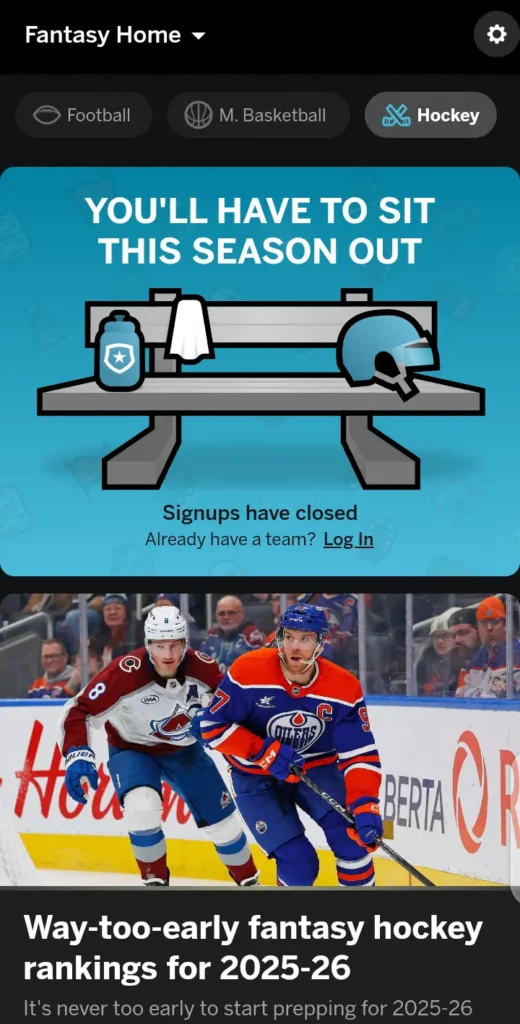
Other Sports: Golf, MMA, Motorsports, and More
Daily fantasy platforms have expanded to niche sports like PGA Golf, UFC, NASCAR, and even tennis. Fantasy golf is typically based on tournament performance, while UFC fantasy rewards fight outcomes and performance metrics. These formats appeal to fans who enjoy single-event contests with big payout potential.
How Fantasy Sports Work
At its core, fantasy sports is a strategy-based online game where participants create virtual teams made up of real-life athletes. These teams compete based on the statistical performance of players in actual matches. The better your chosen players perform on the field, the more points you earn in the fantasy contest. This combination of real-world sports and virtual gameplay creates a compelling experience that merges sports knowledge with strategic decision-making.
Team Creation and Player Selection
The first step in fantasy sports is selecting a contest—either free or paid—and drafting a team within the rules of the platform. Users are given a virtual budget (typically measured in credits) and must assemble a team by picking real players from the upcoming match or series. Each player has an assigned credit value based on factors such as form, reputation, and recent performance. Participants must balance star players with under-the-radar picks to stay within the credit limit.
Most fantasy games require selecting a set number of players based on specific formations. For example, in cricket fantasy, users usually pick 11 players with constraints like a maximum of 7 players from a single team, and mandatory roles such as batsmen, bowlers, wicketkeepers, and all-rounders.
Additionally, users appoint a Captain and Vice-Captain who earn 2x and 1.5x points, respectively, adding a crucial layer of strategic planning.
Scoring System and Live Updates
Once the real match begins, the fantasy platform tracks player performances in real time. Points are awarded based on the platform’s scoring system. For example, in fantasy cricket, points may be given for runs scored, wickets taken, catches, and economy rate. Similarly, football fantasy awards points for goals, assists, clean sheets, and minutes played.
The scores are updated live, which allows users to track how their teams are doing throughout the match. This real-time feedback loop keeps players engaged and often results in fantasy sports being used as a “second screen” while watching live matches.
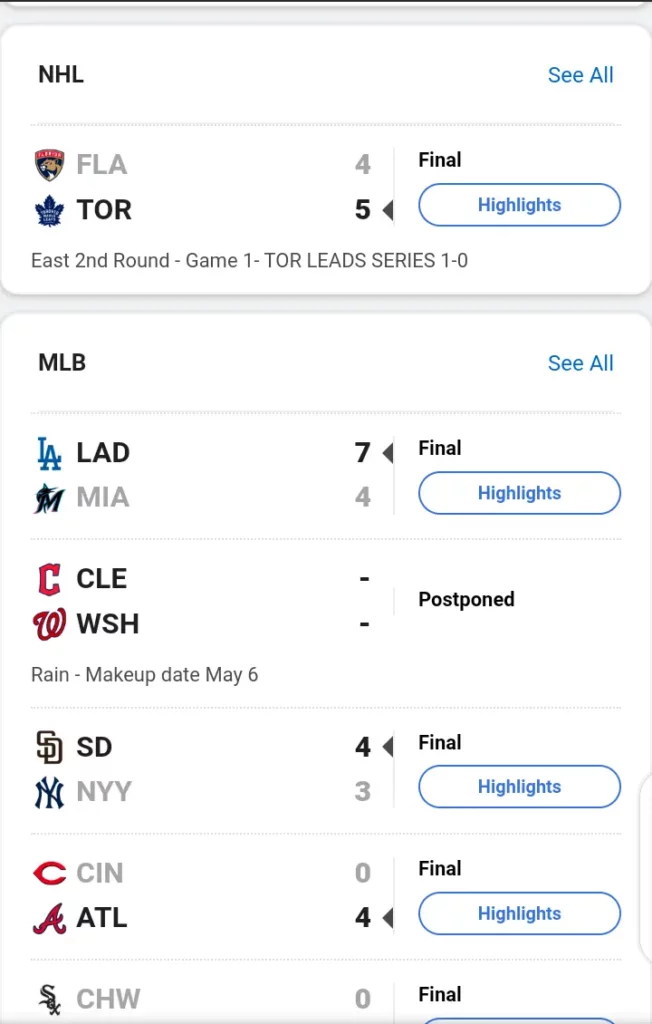
Types of Fantasy Contests
Fantasy sports platforms offer various contest types catering to different playing styles and risk appetites:
- Free Contests: Ideal for beginners, these don’t require any entry fee but may offer small rewards or learning opportunities.
- Paid Contests: These require an entry fee and offer prize pools that range from small winnings to massive cash prizes.
- Head-to-Head: One-on-one contests where two users compete against each other.
- Multipliers and Mega Contests: Larger contests with hundreds or thousands of users. These offer the chance to win big, but competition is fierce.
- Private Leagues: Invite-only contests where users can play against friends and family.
Major Fantasy Sports Platforms
Much of the growth the fantasy sports industry has experienced over the years can be attributed to dedicated platforms that host leagues, deliver real-time statistics, and offer a seamless user experience. These platforms vary widely by region and target demographic, but all serve a common purpose: enabling sports fans to compete using their knowledge and analytical skills. Below is an overview of the most prominent fantasy sports platforms across the globe.
Global Leaders
DraftKings and FanDuel are the two dominant players in the U.S. and several international markets. Both platforms revolutionized the fantasy sports landscape with Daily Fantasy Sports (DFS) formats, allowing users to draft new teams for contests that last a single day or week, rather than an entire season. DraftKings is known for its wide range of contest types, including guaranteed prize pools, head-to-head matchups, and large-scale tournaments with millionaire prizes. FanDuel similarly offers DFS but also features season-long formats and betting integrations where legally permitted. Both platforms have expanded into regulated sports betting and iGaming, offering a comprehensive ecosystem for sports enthusiasts.
Yahoo Fantasy Sports and ESPN Fantasy cater more to traditional, season-long fantasy players. These platforms are staples in North America, offering robust league customization, deep player stats, and content-rich experiences. Yahoo is praised for its intuitive mobile app and easy-to-use draft interface, while ESPN stands out for its expert analysis and integration with its sports media empire.

Leading Platforms in India
India has emerged as one of the fastest-growing fantasy sports markets, largely due to the popularity of fantasy cricket. At the forefront is Dream11, which commands a significant market share and was the first Indian gaming company to become a unicorn. Dream11 offers fantasy contests in cricket, football, basketball, kabaddi, and more. It operates primarily in a DFS model, where users pick players for single-match or series-based contests, often with entry fees and cash prizes.
Other prominent Indian platforms include:
- MyTeam11: Known for its wide contest variety and multilingual support, it appeals to Tier 2 and Tier 3 cities across India.
- MPL (Mobile Premier League): Offers both fantasy sports and casual skill games, with strong mobile integration and celebrity endorsements.
- Gamezy, BalleBaazi, and PlayerzPot: Each provides niche features such as second innings contests, bowling-focused scoring, or mini-fantasy formats to differentiate themselves in the crowded market.

Key Features Across Platforms
Across all major platforms, several core features enhance user experience:
- Live score integration and real-time points tracking
- Secure payment systems and multiple withdrawal options
- Referral bonuses, leaderboards, and loyalty rewards
- Mobile-first design, with Android and iOS apps that offer full functionality
- Compliance with local laws, including age verification and responsible gaming tools
Whether you’re a casual fan or a seasoned strategist, choosing the right platform depends on your preferred sport, contest style, and level of engagement. Each platform has carved out a niche, catering to specific audiences while continually innovating to stay ahead in the competitive fantasy sports ecosystem.
Fantasy Sports Strategy and Tips
Fantasy sports is not just about picking your favorite players—it’s about making strategic decisions based on data, match conditions, and a deep understanding of the game. While there’s no guaranteed way to win every contest, applying proven strategies can drastically improve your chances over time. Here’s a comprehensive look at key tips and strategies that can help you build better fantasy teams and stay ahead of the competition.
Do Your Research – Knowledge is Power
Success in fantasy sports begins with solid research. Blindly selecting big-name players rarely pays off in the long run. Always analyze:
- Current player form: Look at recent performances, fitness levels, and consistency.
- Venue and conditions: Some players thrive on certain pitches, courts, or fields.
- Opposition strength: Consider how a player has historically performed against particular opponents.
- Match format: A player’s fantasy potential varies significantly between formats (e.g., T20 vs. Test cricket, EPL vs. UCL matches).
Use official league websites, sports news portals, and fantasy analytics tools to gather accurate and timely insights.
Balance Star Players and Value Picks
Fantasy platforms generally give you a budget or credits to build your team. While it’s tempting to pick only top-tier stars, this can leave your team lacking depth. Instead:
- Include at least two or three value picks—less expensive players who are in good form or expected to play a key role in the match.
- Monitor team announcements and probable playing XIs—often, lesser-known players can shine unexpectedly.
- Diversify your investment across key positions to avoid being over-reliant on a single star performer.
Choose Your Captain and Vice-Captain Wisely
Most platforms offer extra points for the captain (usually 2x) and vice-captain (1.5x). This single decision can make or break your game. To maximize returns:
- Pick players who consistently perform in all match aspects—batting, bowling, or defending.
- All-rounders are often a safe bet due to their dual contributions.
- If you’re in a high-risk contest, go for a slightly unconventional pick as captain—differentials can give you an edge over competitors who pick popular options.
Understand Contest Types and Risk Levels
Different fantasy contests require different strategies:
- Head-to-head (1v1): Play it safe with high-consistency players.
- Small leagues (2-100 users): Slight risk is fine, but avoid extreme gambles.
- Mega contests: Here, standing out is key. Taking calculated risks with low-ownership players (differentials) may provide the edge needed to win big.
Make sure to read contest rules—some might have unique scoring systems or player caps.
Advanced Stats and Sleeper Identification
To truly excel, tap into advanced metrics:
- In cricket, use metrics like dot ball percentage, strike rate against spin, or death overs economy.
- In football, rely on expected goals (xG) or yards per route run.
- In basketball, go beyond PPG—metrics like usage rate or true shooting percentage provide more predictive power.
Also, keep your eyes on sleepers—undervalued players with breakout potential. Monitor preseason performances, injury replacements, or players in contract years.
Bankroll Management is Crucial
Whether you’re playing for real money or free contests, never stake more than you can afford to lose. Manage your bankroll wisely:
- Allocate only a small percentage of your total funds per contest (e.g., 5–10%).
- Diversify—don’t put all your credits into one contest or team.
- Mix your contest types: some high-risk, some low-risk.
A long-term mindset helps you weather short-term losses and stay profitable over time.
Stay Updated and React Fast
- Many platforms allow team changes until the match begins. Use this window:
- Confirm final playing XIs and make last-minute adjustments.
- Watch out for toss decisions, lineup surprises, or weather interruptions.
- Follow credible social media channels or use fantasy sports alert apps for real-time updates.
Late adjustments often separate seasoned players from casual ones.
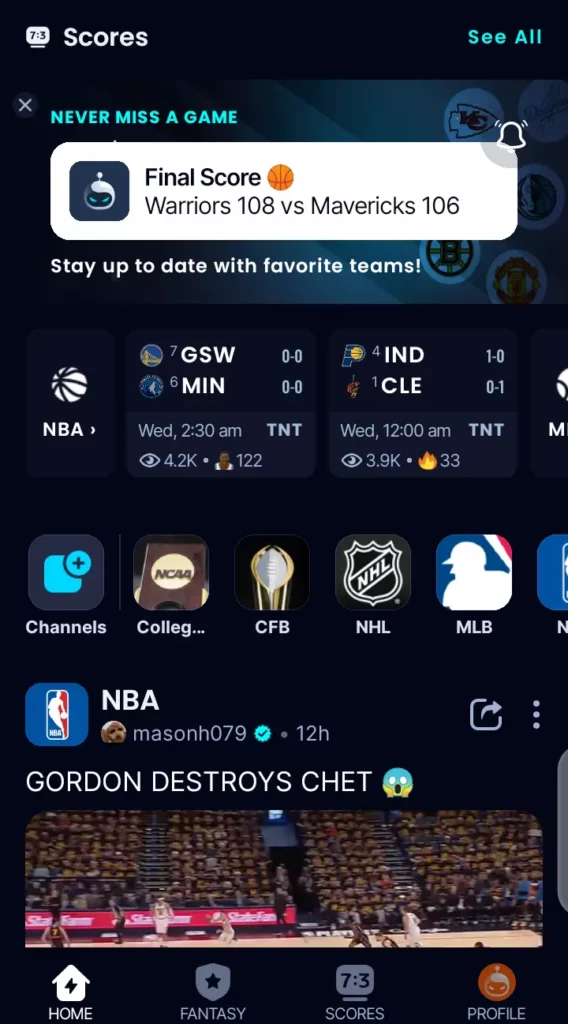
Track Your Progress and Learn
Keep records of your performance:
- Which contests you won or lost
- Players who performed consistently
- Mistakes or assumptions that didn’t work
Analyzing your history helps refine your strategy and avoid repeating errors. Some top players even maintain spreadsheets or journals to track insights.
Legal and Regulatory Landscape
The legal status of fantasy sports varies significantly across jurisdictions, shaped largely by how a country or state interprets the distinction between games of skill and games of chance. This legal categorization plays a pivotal role in determining whether fantasy sports are permitted, regulated, or banned outright.
In countries like the United States, the Unlawful Internet Gambling Enforcement Act (UIGEA) of 2006 carved out an exemption for fantasy sports, provided they are based on skill and do not rely solely on the outcome of a single game or player performance. This allowed platforms like DraftKings and FanDuel to thrive, although individual states still regulate their availability. As of 2025, over 40 U.S. states have legalized some form of fantasy sports, with a few like Nevada and Washington maintaining restrictions or requiring specific licenses.
In India, fantasy sports are generally legal when classified as games of skill under the Public Gambling Act of 1867 and further validated by various High Court and Supreme Court rulings. Dream11’s victory in key court cases reinforced the notion that success in fantasy sports depends predominantly on a player’s knowledge, judgment, and statistical analysis. Regulatory bodies like the All India Gaming Federation (AIGF) and Self-Regulatory Body for Online Fantasy Sports Platforms (NITI Aayog recommended) are working toward standardizing industry practices and ensuring consumer protection.
In contrast, Europe presents a patchwork of regulations. While the UK regulates fantasy sports under its Gambling Commission, other EU nations have differing standards and licensing requirements.
Monetization and Revenue Models
Fantasy sports platforms operate on a dynamic and diversified revenue model that blends user participation, strategic partnerships, and digital innovation. At the core of their monetization strategy lies the entry fee mechanism—users pay to join contests, and a percentage of the pooled entry fees is retained by the platform as a service charge, while the rest is distributed as winnings. This model ensures a sustainable revenue stream that scales with the platform’s user base.
In addition to contest fees, advertising and brand sponsorships form a major revenue pillar. With millions of active users, fantasy platforms attract sponsorship deals from sports leagues, consumer brands, and betting affiliates. High-traffic periods such as major tournaments (like the IPL or World Cup) see a surge in branded content, in-app promotions, and partnership campaigns, all contributing to monetization.
In-app purchases and gamification also enhance revenue. Some platforms offer users premium features such as expert advice, stat analysis tools, or booster packs in exchange for microtransactions. These add-ons provide competitive advantages without compromising fairness.
The Role of Data, Analytics & AI in Fantasy Sports
In the modern fantasy sports landscape, success hinges on more than just intuition or a love for the game—it requires a deep understanding of data, analytics, and increasingly, artificial intelligence (AI). What was once a casual pastime based on gut feelings has evolved into a competition driven by predictive modeling, advanced statistics, and algorithmic decision-making.
Data: The Lifeblood of Fantasy Strategy
At the heart of fantasy sports is data—player stats, injury reports, matchup histories, weather forecasts, team formations, and even off-field variables. Fantasy platforms provide a wealth of real-time and historical data, ranging from basic metrics like points scored, rebounds, and goals to advanced analytics like expected goals (xG), usage rates, and player efficiency ratings (PER). Successful fantasy managers study this data to identify undervalued players, avoid injury risks, and predict breakout performances.
For instance, in fantasy football, player usage in the red zone, snap counts, and target share can be more predictive of future performance than traditional box score stats. In cricket, strike rates, economy rates, and player records against specific opponents or on specific pitches can guide selections more effectively than averages alone.
Analytics: Turning Numbers Into Winning Insights
Data becomes powerful only when it’s analyzed effectively. Fantasy analytics involves applying statistical tools to derive meaningful patterns and actionable insights. Managers use regression models, projections, and simulations to forecast player performance. Tools like Monte Carlo simulations help assess risk in high-variance scenarios, while correlation matrices can identify which stats drive scoring in specific fantasy formats.
Daily Fantasy Sports (DFS) players often rely on value calculators, which divide projected points by player cost to optimize lineups under salary caps. Some use lineup optimizers that run thousands of simulations to generate the most statistically favorable combinations, balancing ceiling (maximum upside) with floor (minimum expected points).
Third-party platforms such as FantasyPros, Rotowire, and NumberFire provide pre-processed data sets and projection models to help users make informed choices, saving time while boosting competitiveness.
AI: The New Frontier in Fantasy Domination
As fantasy competition intensifies, AI is becoming a critical tool for advanced users. Machine learning algorithms are now used to analyze massive datasets, learn from user behavior, and predict future outcomes with increasing precision.
AI can:
- Generate real-time player performance predictions based on evolving game data
- Adapt to changing trends and injuries automatically
- Recommend optimal lineups based on user history and league settings
- Detect inefficiencies in the market (e.g., underpriced players in DFS)
Platforms like DraftKings and FanDuel are incorporating AI not only to personalize recommendations but also to prevent bot exploitation, ensuring fair play. Meanwhile, independent tools allow savvy users to deploy custom-trained models for niche leagues or unique scoring formats.
Impact of Fantasy Sports on Fan Engagement
Fantasy sports have fundamentally transformed how people engage with live sporting events, turning passive viewers into active participants. At the heart of this transformation is the user’s ability to build their own virtual teams and directly associate their success with the real-life performances of athletes. This shift deepens emotional investment in both players and matches.
Increased Viewership and Match Interest
Fantasy platforms drive fans to watch even low-profile or non-local matches closely. For example, a user who selects a bowler from a less-followed team is more likely to watch that team’s match attentively. Every run, goal, or tackle now carries personal stakes, pushing fans to follow live broadcasts, highlights, and post-match analyses more closely than ever before.
Data-Driven Fandom
Players of fantasy sports become more analytical in their approach. They follow pitch conditions, player form, weather forecasts, and team strategies with a keen eye. This leads to a more informed and engaged fan base that values in-depth statistics over mere sentiment or team loyalty.
Social and Competitive Layer
Fantasy leagues often come with private contests among friends, office colleagues, or local communities. This peer competition adds a social dimension to fan engagement, creating banter, bragging rights, and a shared passion for performance.
Fantasy Sports vs. Sports Betting
While fantasy sports and sports betting both revolve around predicting the outcomes of real-world sporting events, they are fundamentally different in structure, intent, and legal treatment. Understanding these differences is essential for both casual players and enthusiasts.
Skill Vs. Chance
At the core, fantasy sports are games of skill. Participants create virtual teams made up of real-life athletes and earn points based on the actual performance of these players during matches. Success in fantasy sports depends heavily on a player’s knowledge of the game, statistical analysis, player form, and strategy. The team is usually selected within a credit or budget limit, requiring the user to balance stars with lesser-known value picks—a process that rewards thoughtful planning and sports expertise.
In contrast, sports betting is considered a game of chance in many jurisdictions. Bettors visit sportsbooks like Parimatch to place real-money wagers on outcomes. These include the winner of a match, the number of goals scored, or specific in-game events. While informed betting can improve odds, the activity typically hinges on luck and unpredictable factors, which is why it’s regulated differently in most legal frameworks.
Legality
Legally, this distinction is crucial. In countries like India, where betting laws are strict, fantasy sports are often permitted under the classification of skill-based games, while sports betting is mostly outlawed or heavily restricted, barring a few exceptions like horse racing. Courts have repeatedly recognized fantasy sports as skill-driven activities, shielding them from gambling prohibitions.
User Experience
Another major difference lies in the user experience and engagement. Fantasy sports often demand sustained involvement—selecting players, tracking form, adjusting strategies for different contests—leading to a deeper and more informed consumption of sports. Sports betting, meanwhile, usually involves one-off wagers that don’t require long-term strategic planning or ongoing player evaluation.
From a psychological standpoint, fantasy sports offer a sense of team ownership and community interaction. Players often join leagues with friends or colleagues, compete over seasons, and celebrate their virtual teams. Sports betting tends to be more individualistic and transactional, with a stronger emotional reaction tied to monetary wins or losses.
Conclusion
Fantasy sports have evolved from humble beginnings into a dynamic, global phenomenon that blends skill, strategy, and sports fandom. From understanding game formats and platforms to mastering data-driven strategies and navigating legal landscapes, the world of fantasy sports offers endless depth for enthusiasts at every level.
As technology advances and player engagement deepens, the future of fantasy sports promises even more innovation, personalization, and community. Whether you’re a seasoned player or just starting, fantasy sports offer a thrilling, immersive way to connect with the games you love. Play smart and stay informed!
Frequently Asked Questions (FAQ)
What are fantasy sports?
Fantasy sports are online games where participants create virtual teams of real-life athletes. Points are earned based on the players’ real-world performance.
Is fantasy sports considered gambling?
In many jurisdictions, fantasy sports are classified as games of skill, not gambling, because outcomes depend on player knowledge, analysis, and strategy, not pure chance.
How do I start playing fantasy sports?
Choose a platform, create an account, join a contest or league, draft your team, and compete based on real-life player stats.
What’s the difference between Daily Fantasy Sports (DFS) and season-long fantasy?
DFS contests last only one day or week, offering quicker results, while season-long leagues span an entire sports season and require long-term strategy.
Can I play fantasy sports for free?
Yes, most platforms offer both free and paid contests, allowing beginners to practice without financial risk.
How is scoring calculated?
Each platform has its own scoring system, usually based on real-world stats like goals, assists, points, or yards gained.
Is fantasy sports legal in India?
Yes, fantasy sports are legal in India and recognized as games of skill. However, despite nationwide legal validation, paid fantasy sports are not uniformly legal across all Indian states, so you should do your due diligence.
